The Ciseal Blog

Black Friday? Why We Should Be Supporting Green Friday Instead
This Black Friday, let's focus on helping the planet by making more intentional and sustainable choices.

Photo by Thirdman
Over-consumption is one of the most pressing challenges facing our planet today. Decades of data have made it clear that human behavior is directly linked to climate change. Acknowledging the climate emergency as the defining issue of our time, its up to each of us to take meaningful action. Fortunately, there are plenty of ways for each and every one of us to keep our consumption in-check.
This Black Friday, while countless companies battle to offer the lowest prices, I urge you to pause and reflect. If you choose to shop today, prioritize thoughtful, intentional purchases. Opt for high-quality, handcrafted products made to last, and support independent businesses whose values align with a sustainable future.
Our planet's resources are finite, and there's no "Planet B." This Black Friday, let's slow down, consume less, and make better choices for the environment.
Why Ciseal Doesn't Compete in the Black Friday Price Race
As a design-led, sustainability-focused brand, I believe in forging a different path. For me, it's not about being the cheapest - it's about doing what's right.
Every day, I craft products that defy throwaway culture and that stand the test of time. My designs are handcrafted with intention, combining timeless aesthetics with the highest standards of quality.
I refuse to compromise. No harsh chemicals, no shortcuts, and no dumpsters of wasteful offcuts - just innovation, passion, and a commitment to sustainability. Every choice I make is rooted in the belief that better decisions today can shape a better tomorrow.
This Black Friday, let's make a path for a more mindful, sustainable future together.

Photo by Tim Meyer on Unsplash
Ciseal Focuses Instead On...
QUALITY
Every detail matters. I pour tremendous thought and effort into perfecting every curve until it is just right. I'm continuously looking for opportunities to improve both quality and sustainablity - like by transitioning to using only sustainably-harvested hardwood veneer that's grown in the upper midwest for the core layers of every product. Creating tomorrow's heirlooms, I'm dedicated to crafting pieces that are made from durable materials so they can be cherished for a lifetime. True design excellence demands time, skill, and unwavering dedication - qualities that make Ciseal products timeless investments.
SUSTAINABILITY
My choices prioritize what's best for people, the planet, and my business. Guided by a passion for eco-conscious design, I work to ensure my processes and materials honor and protect the natural world - the very source of my inspiration. From the materials I work with to the products I package them in for shipping, sustainability isn't just a buzz word; it's the foundation of everything I do.
LEARN MORE ABOUT CISEAL'S CORE VALUES

Photo by Noah Buscher on Unsplash

12 Interior Trends From Around the World
Every culture has its own preference when it comes to beauty, fashion, lifestyle and even interior design. But all cultures agree on one thing and that is having a cozy and comfortable living space is what brings us together. Homes now represent design themes from all over the world. Whether Asian, Mediterranean or Spanish; our homes are where different cultures can truly shine and bring all the design aspects together. Here we present 12 different interior trends from around the world that are present in each and every single house.
Japan

Interiors inspired by Japan always feature colorful painting, low furniture and wooden pieces are usually made with unfinished woods. Homeowners adopting Japanese interior style are the ones who use sliding panels instead of walls to divide their space. Potted plants and ceramic vases are used to decorate the house. This overall interior trend is known for its simplicity and symmetry.
India

Indian styles homes use brightly colored textile for pillows, rugs, furniture, throws, towels, bed linens and furniture pieces. You would see houses adopting this style usually decorate with greenery in colorful pots and vases that sit on the floor as well as statuses. Dark wood is this style favorite where it is used to make furniture, frames, trays and mirrors.
Italy

This is a grandeur style that usually features sculptures and graceful statues, often depicting children, musicians, and beautiful women. Furniture pieces would be decorated with exquisite carvings covered with gold or bronze. This trend also used luxurious linens such as (brocade, silk, velvet) and rich finishing.
Scotland

Patterned materials are often used for furniture pieces as well as dark leathers. Fireplaces are often present in houses with Scottish interior styles whether it's a real one or a painted fireplace on an accent wall. Homeowners looking to execute the Scottish way in interior design should opt for a well-lit room through the use of colorful fabrics, candles and fireplaces.
United States of America

American houses are famous for their floor to ceiling windows that give panoramic views and allow more natural light inside the house. Such style fancy light-colored fabrics that radiates simplicity and elegance. Vases and jars are used to decorate the house, however, they mostly found filled with sand or stones rather than greenery. Throws and cushions are usually scattered all over the furniture pieces in an uncluttered yet appealing way.
United Kingdom

This style favors lamp, candle and fireplace light rather than its natural source. Houses with UK interior design feature built-in hardwood shelves for books, ornaments or platters...etc. Bold patterns are mostly used for furniture and curtains. The kitchen is the masterpiece and the family-sized dining area is where all the focus is.
France
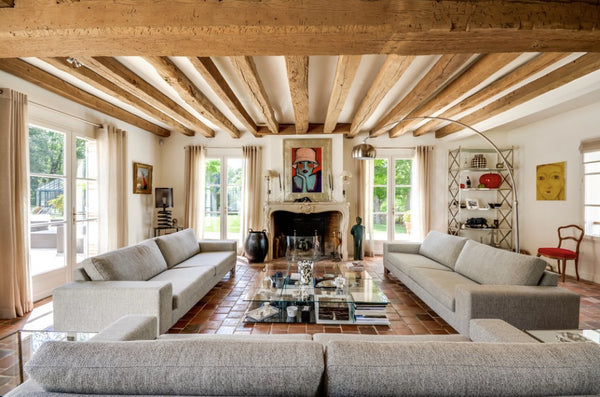
Candelabras and chandeliers are often used in this interior design trend for they add glamour and elegance to any space. Walls are decorated with large mirrors, tapestries and artworks. Baroque-style carvings inspired by the Romans are usually found on furniture and wall decor such as mirror frames. Often walls are painted with white or blue colors.
Mexico

When in Mexico, colors are dominant whether on walls, furniture, rugs, throws and pillows. This style isn't afraid to use so much colors for colors are the secret to a happy home. Wooden furniture are also found carved and painted.
Morocco

Moroccan style decor is into cool and calming palettes of sea, blues of sky or greys with plenty of neutral shades. This style is all about geometric patterned soft furnishings. Tile patterns combined with tactile textures are the way to go if you want to implement this style of decoration in your house.
Sweden

Swedish style decor is balanced simplicity where spaces are usually uncluttered. This style radiates simplicity in every corner from its soft furnishings and rugs to windows and shades that allows more natural light inside the house. What is even more fascinating about this style is that most spaces would be found highly-personalized where there are little to no distractions whether telephone, television or computers.
Egypt

Egyptian style is known to be expressive and dramatic through the use of pieces that add an antique chic and elegant touch to any space. Egyptian interior style is rich with colors and a style that love to mix between black, gold and yellow. Egyptian statuses will also add to your house's entire style. All shades of yellow color, from desert sand shades to golden-yellow color tones, are excellent for creating Egyptian interior in any space.
China

Chinese style has a way in evoking an image of serenity and tranquil calm. This style is usually accompanied with colors like pinks of cherry blossoms, ravishing reds and luxurious purples. And for a more traditional Chinese look, use ornate rugs for they are perfect to complete the look you aspire for.
About the Author:
Jamie Moulton is a senior content curator at JustProperty.com, a leading real estate portal in the MENA region, headquartered in Dubai, UAE. Thanks, Jamie!

10 House Plants to Brighten Up Your Home this Winter
With winter in full swing here in Michigan, and that means more time indoors snuggling with the pups. In fact, we currently have about 12 inches on the ground here, and I feel like It’s going to be a while before we see any green leafy things outside. If you’re in the same boat, tide yourself over during these seemingly lifeless winter months with some house plants. They’re quiet, relatively inexpensive, require minimal maintenance, have been shown to reduce stress, and they even clean the air for you - I wish my dogs could do all that! Here are 10 of my favorite house plants for brightening up your home on a dreary day plus some tips for keeping them alive throughout the winter months and beyond.
Fiddle Leaf Fig

Perhaps possessing the most beautiful, lush leaves on this list, the Fiddle Leaf Fig is certainly a photogenic plant. It starts out as a bush, but can grow into a lush tree (a small one - don’t worry) if trained properly. Fiddle Leaf Figs enjoy bright indirect light, moderate amounts of water, and an occasional leaf dusting to keep it looking sharp. This is a relatively forgiving plant, so it’s great for beginner plant parents.
Spider Plant

Spider plants are great air purifiers plus they’re super easy to take care of. It prefers bright indirect light, and moderate amounts of water. Watch the leaf tips - if they start to brown, then try watering with some collected rainwater (or melted snow) because they can be sensitive to the added fluoride in tap water. A pro tip for cat owners - the Spider Plant is non-toxic and harmless, but it is mildly hallucinogenic to cats.
Snake Plant

The Snake Plant has beautiful, tall leaves and it loves all kinds of light conditions - low, bright, indirect, fluorescent, all of the lights! It requires very little water, so it’s perfect for the forgetful plant owner. It is awesome at converting CO2 to O2, so if you’re in the market for an air purifying powerhouse, this is the plant for you.
English Ivy

English Ivy has very distinctly shaped leaves that look lovely as they hang down from higher perches. It is a very forgiving plant which prefers drier soil, so make sure the top of the soil is dry before watering. It’s a fan of all kinds of light and won’t mind an occasional cold draft (how very English), which makes it one of our favorite winter pick-me-ups.
Peace Lily

The Peace Lily is a very popular house plant because of its gorgeous flowers, beautiful foliage, and superior air cleaning abilities. If you’re a fan of low maintenance and forgiveness, then the Peace Lily is the house plant for you. Peace Lilies will droop when they want water, so you never have to wonder if it’s thirsty or not. It loves the gamut of light qualities from low to bright, but is not a fan of direct light. Just keep your Lily away from windows and you’re golden.
Rubber Plant

Rubber Plants have big, green leaves that add a lush freshness to your winter home. Like most houseplants, Rubber Plants like moderate watering and bright indirect light. It’s a nice and easy plant to care for, and other than an occasional dusting of it’s leaves, it’s happy just to be inside brightening your home.
Weeping Fig
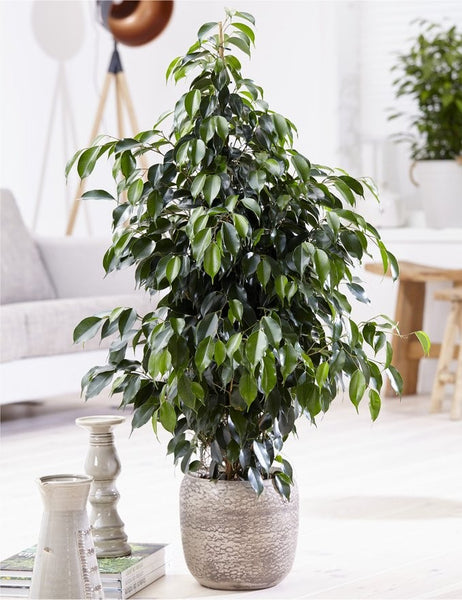
If you keep your home at about the same temperature all of the time, year-round, then the Weeping Fig is your best plant friend. This plant does not like change - don’t change the temperature too much, and don’t move it around your home and you’ve got a happy camper in the Weeping Fig. It likes bright indirect light and moderate water.
Bird of Paradise
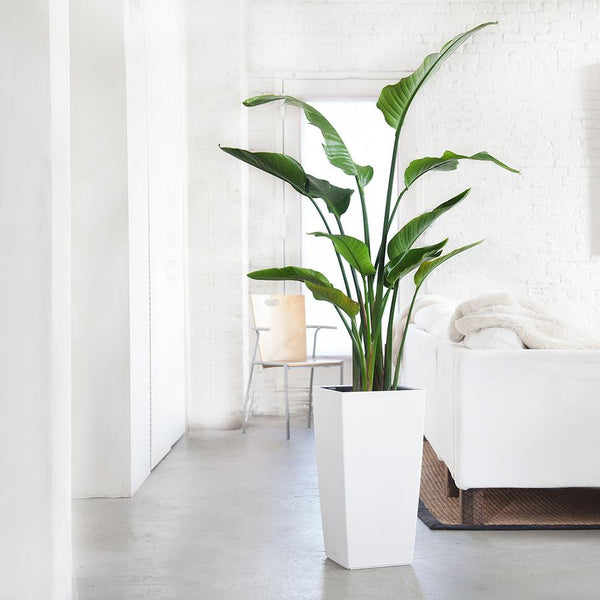
As far as flowering house plants go, the Bird of Paradise is one of the most beautiful. Year round, it rewards you with lush foliage, but it really puts on a show when it blooms. Bright light is what this plant lives for, so don’t hide it away in a corner. It goes somewhat dormant in winter, so it requires less water than in the summer months when it drinks up plenty of water. This plant can grow to over 5 feet tall in the right pot and conditions, so make sure you have the space or are prudent with trimming.
Boston Fern
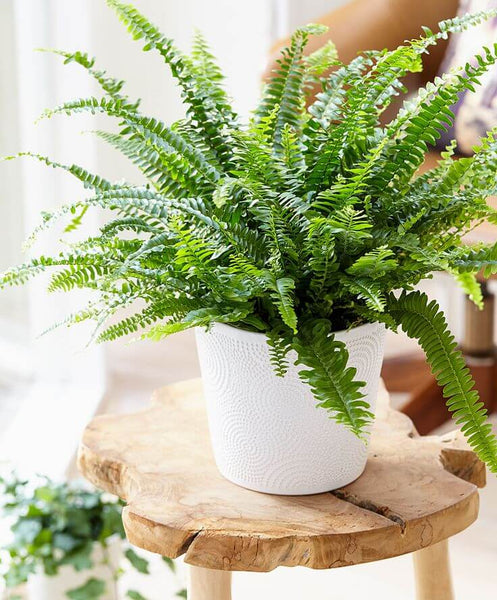
The Boston Fern loves a humid environment, but don’t let that deter your in the winter months. A bit of misting from a spray bottle will keep this plant happy through the drier months, and be sure to keep the soil moist. It will tell you it needs more humidity when it’s leaves begin to yellow. It grows best in bright, indirect light.
Jade Plant

And for those of you who just can’t seem to keep anything green alive, the Jade Plant is for you. Jade Plants are succulents - meaning they thrive on very little water. They are dormant in the winter, so you can let their soil get pretty dry in between waterings. In the summer time it will require more water. Their leaves will let you know if they need more water - full, glossy leaves are happily watered. If the leaves start to spot or begin to fall off, then you need to water the plant a bit more. In spite of the little water they need, Jade Plants manage to grow as happy-looking, cheery house plants.
Now, a lot of house plants are moderately toxic to pets, so if you have furry friends you need to train them to stay away from the plants or keep the plants out of reach. For the more stubborn or slow-to-learn pets, stick to only non-toxic plants like the Boston Fern and Spider Plant.
As a general rule for most house plants, they like bright indirect light. Most of the plants on this list require moderate water which means watering 1-2 times per week depending on the plant, how much you water at one time, and the relative humidity in your home. I like to set a reminder on my phone for once every week to keep me on top of my plant watering. If you’re not sure if it’s time to water yet, stick your finger in the soil about one inch deep. If it’s dry then give it some water, if it’s still moist, then hold off on the water for now. Another indication of when or how much to water is the plant’s leaves - if they turn yellow or brown it’s due to under or over watering. If you’re ever in doubt about a symptom or need more info on when to trim, fertilize, re-pot, or anything else, just google your plant’s species and you’ll find plenty of help.

Retro Christmas Cards
Who here hasn’t sent their Christmas cards yet? Me! I haven’t even ordered them yet - oops! I’m still trying to decide which design to get, but I know for sure it’s going to be a retro-inspired one this year. That Midcentury vibe of bright colors, clean lines, classic cocktails and 60’s jazz really gets me into the Christmas spirit. If you’re in the same boat, check out The Retro Christmas Card Company. The great thing about them is that their original Christmas cards are all designed, illustrated and printed here in the USA. The only problem is that there are so many good ones that I just can’t decide! Here are a few of my favorite designs that I’m currently contemplating:






10 of Our Favorite Mid Mod-Inspired Christmas Gifts
Giving a gift for someone's home can be tricky. You really have to know the person and their style. Fortunately, it's easy to spot a Midcentury Modernist. Their home is a carefully curated collection of functional pieces with clean lines, warm woods, shiny metals, and pops of bright colors. If you have a Midcentury Modernist on your list, here are 10 of our favorite gifts to give (and receive!):
Making Midcentury Modern by Christopher Kennedy

I love giving an receiving books as gifts - especially beautiful books that inspire me to change things up a bit and try new things. Making Midcentury Modern is a gorgeous book filled with beautifully styled Midcentury inspiration. It’s perfect for the Midcentury fan who doesn’t exactly live in their Midcentury dream home yet, but who loves to add some Midcentury style to their home anyway. The ideas in the book are fresh with a thoroughly modern take on Midcentury's design principles.
Travel Posters by Charley Harper for the National Park Service

A great graphic print with bright colors and geometric shapes add a midcentury twist to a gallery wall or stand-alone as a statement piece. These travel posters for the National Park Service by the famed illustrator Charley Harper are geometric, bright, and incredibly detailed. These posters are the last of the original stock, so they will sell out!
Coasters by Ciseal
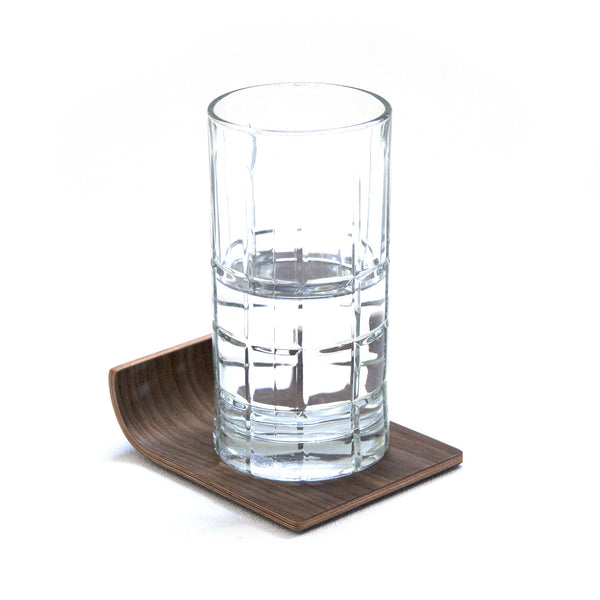
If your Midcentury modern giftee takes good care of their well-curated furniture, they’re going to want some classy coasters to protect their fantastic furniture finds. This set of four coasters adds a classic Mod bent plywood flair to any room - Midcentury or not.
Wake Mug by Samantha Nichols

Who doesn’t look forward to a deliberately slow morning? Slowly sipping on coffee or tea, reading a much loved book, snuggling with the dog…there’s nothing better. Mid-Century style is keen on intentional, simple, beautifully restrained home goods, and this mug exhibits those qualities perfectly. It’s the one they’re going to reach for on those easy Sunday mornings.
Starburst Clock by George Nelson for Vitra

George Nelson’s famous starburst clock designs are a welcome addition to any Mid Century space. Not only are they practical, but the bright colors, earthy wood tones, shiny metals, and geometric shapes add that fun Midcentury vibe to any room.
Pineapple Cocktail Shaker by W+P Design

Midcentury style and cocktails are a match made in heaven. The Mod bar isn’t complete until it has a signature cocktail shaker, and this pineapple shaker by W+P Design is where it’s at. It’s a smart and stylish addition to the home bartender’s tool kit.
Graphic Print Throw Pillows by Alexander Girard for Vitra

Midcentury style thrives on a mix of patterns and textures. Add that comfortable, chic, and eclectic vibe with one or more of these pillows with Alexander Girard’s bright and graphic designs.
Quilt by Haptic Lab

Winter nights require a cozy bright throw to warm up with a snuggle. This throw by Haptic Lab is the perfect gift for those Great Lakes Midcentury Modern fans.
Traverse Table Lamp by Ciseal

Brighten their decor with a mid-century style table lamp. This distinctly Midcentury tripod table lamp adds an extra glow to any corner of the home.
The Runwell Turntable by Shinola

You can’t get much more Midcentury than an evening listening to records. This modern turntable by Shinola adds a bit of sleek style with the classic combo of wood and metal. Add a couple of favorite albums and you have everything needed to create a cozy, relaxing evening.

Inspiration Friday: Alexander Girard
Through his work across the fields of architecture, interior design, textiles, and graphic design, Alexander Girard became one of the most influential designers of the twentieth century. Even today, Girard’s work with color, texture, decoration, and handmade details are regarded as touchstones of classic modernism. He is widely regarded as the greatest colorist and textile designer of the mid century era.

Alexander Girard was born in 1907 in New York City and raised in Florence, Italy where he was immersed in the art and design culture. After training at the Royal Institute of British Architects in London and the Royal School of Architecture in Rome, he moved to New York City in 1932. It was in New York that he began his career as a designer. He moved to Michigan in 1937 where he established a design office and retail space in Grosse Pointe. Even though he moved to New Mexico in 1953, Girard kept his Michigan ties strong by heading the textile and fabric division of Herman Miller, headquartered in Zeeland, Michigan.
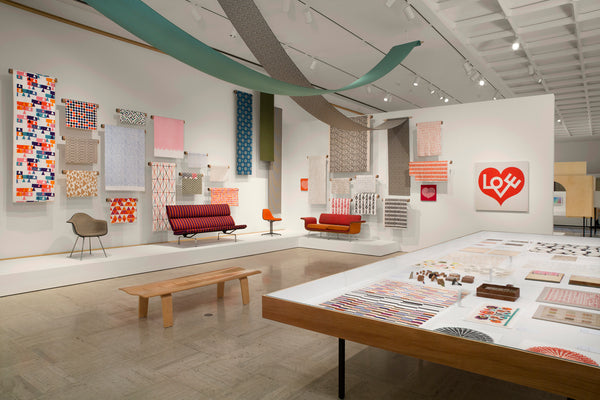
His collaborations with designers and architects such as Charles and Ray Eames, Eero Saarinen, and George Nelson, among others influenced a wide range of art and design fields including furniture, textiles, graphics, architecture, and sculpture. For instance, his For Modern Living exhibit at the Detroit Institute of Arts in 1949 included the first public display of Charles and Ray Eames’ molded plywood chairs. His collaborations helped to popularize mid century modern design and make it a sought-after style.

His most influential work was probably when he served as director of design for Herman Miller’s textile division. During his 20 years there, Girard created more than 300 fabric and wallpaper designs. Many of these vibrant designs were inspired by his international travels and expansive folk art collection. Girard’s vibrantly-colored and folk-art-inspired textiles helped to energize the furniture designed by his Herman Miller colleagues. He was the first designer to see textiles as more than just functional. He saw that the color and pattern of the textile could emphasize the clean forms of mid century design.

While Girard died in 1993, we continue to be inspired by his vibrant work. If you’re interested in seeing his comprehensive work, you’re in luck! The Vitra Design Museum in Weil am Rhein, Germany is in possession of Girard’s personal estate which includes many drawings, sketches, photographs, textiles, folk art objects, and furnishings. Pieces from the Vitra collection as well as items from Girard's folk art collection on loan from the Folk Art Museum in Santa Fe are featured in the Vitra Design Museum’s exhibition, “Alexander Girard. A Designer’s Universe,” and it’s currently on tour. Learn more about the exhibition including upcoming tour dates and locations here.
All photos: Cranbrook Art Museum

Is “Handmade” Just a Marketing Gimmick?
Interest in handmade products is on the rise - and for good reason. The shift towards purchasing handmade products is a counterpoint to the impersonal mass production and mindless purchasing we’ve become accustomed to in the past 60 years. For many who are weary of the impact that large corporations have had, buying handmade is the socially, economically, and environmentally responsible thing to do. But in this day and age of accessible technology, many consumers are not sure they can trust the “handmade” label. Handmade is a big marketing angle in our industry, and we wanted to take a second to discuss where we stand.

When you can find thousands of identical “handmade” pieces of furniture at big box stores it’s easy to give a cynical side eye at the mention of “handmade.” As soon as a product is labeled “handmade,” a massive gray area emerges in your mind. From doing everything exclusively by hand with hand-foraged materials and handmade tools to hand-finishing a bowl that was carved on a computer-guided lathe - there are many interpretations along the spectrum and it’s easy to see why “handmade” can be so confusing. It comes down to deciding for yourself where along the spectrum you’re most comfortable.
To discover where you stand, please feel free to ask questions like, whose hands made it, where it was made, out of what materials, with what methods, and was the maker respectfully compensated? Any maker of handmade products should be happy to answer all of these questions and more, and if they’re not, then that’s probably a good sign to move on. With your questions answered, you will be able to make more informed decisions that leave you feeling satisfied and proud of your purchase.

Photo by Alice Donovan Rouse on Unsplash
For me, I find it helpful to think of handmade as craft made, and when I think of craft made, I’m reminded of craft beer - all of those tiny breweries that have emerged in the past few years who produce delicious, flavorful, and unique beers. Craft breweries create their brews with passion and love, and that’s plain to taste in their mouth-watering products. They may not all be focused on creating their beer completely by hand like in centuries past because of volume demands or health and safety factors, but their craft remains their focus. It’s a responsibility to the ingredients, the process, the final product, and the customer - not just the executives and the shareholders - that set craft breweries apart from their larger corporate counterparts. That essence is what I look for in “handmade” products for my home. I want to know that the materials are sustainably and responsibly sourced, the methods used to make it will last, the design is something I won’t tire of, and the maker is adequately compensated so that they will be able to continue to make their lovely wares for years to come.

Photo by Raoul Ortega on Unsplash
Ciseal’s interpretation of handmade allows for the use of machinery and technology where it makes sense in improving the quality of the final product. We don’t hand-forage or reclaim wood from old barns because our craft doesn’t really work well with those methods. The veneers we use are sustainably sourced, and they are produced on computer-guided saws that maximize the use of the natural material. We hand-cut each layer of veneer to shape, then the glue is brushed on by hand. Our products are pressed to shape by using either manual clamps or a motorized vacuum press depending on the design’s requirements. We use hand-operated power tools like saws, sanders, and drills to prepare our products for their final hand-sanding. Then we apply a hand-rubbed finish to preserve and protect each piece. By the time it makes its way to you, each piece has had our hands all over it. Eventually, we will probably consider using industrial presses with machined dies to bend our plywood when our volume necessitates it, but much of our process will always remain very hands-on.
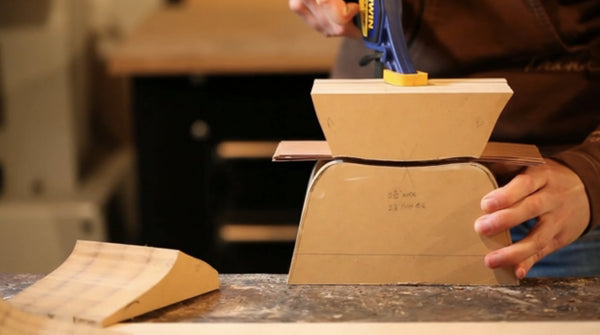
As a small business, it’s a challenge to balance design, production, and value to our customers all while making sure the business is producing a healthy profit that will ensure that it stays around. Someday, that balance may lead us to consider producing our products with a mass-manufacturing approach, and when that time comes we will weigh all of the costs and benefits. For now, we will stick to our almost completely hands-on process because we love what we do and how we do it and we believe it makes our products better for it. Thank you to everyone around the world who find value in our work the way it is, and thank you to those of you who want to see us grow into the biggest bent plywood manufacturer in the world. We’re humbled by your support.

Slow Design: It’s Worth the Wait to Create the Home You Really Want
Photo by Timothy Buck on Unsplash
Whether it’s for a tiny New York City studio apartment or a 4,000 square foot McMansion in the far off suburbs, everybody needs furniture in their home. Purchasing furniture is a rite of passage for every adult. Today, the majority of us - at least in America - buy furniture from massive chain stores. It's quick, easy, and they always have something that will work, right? But when's the last time you stopped to think about where that fast and cheap furniture comes from? How is it made, by whom, and from what materials? These are questions the slow food movement has urged us to ask about the food we eat. Isn't it time we give the same consideration to the objects that make our house a home?
Slow Food started in Italy as a response to the first McDonalds restaurant opening in Rome. It emphasizes the mindful use of local ingredients harvested and prepared in a socially and environmentally responsible way. Most of all, it encourages presence of mind in the creation and consumption of food in order to counteract the frenetic pace and anonymity of 21st-century life. As Slow Food gains popularity, people increasingly support their friends and neighbors who operate locally-owned farms and restaurants. Natural, wholesome ingredients and hand-crafted preparation bring the focus back to the colors, flavors, and textures that fuel our bodies and the community, conversation, and present state of mind that fuel our souls.

Photo by David Hellmann on Unsplash
The Slow Food credo “Good, Clean, and Fair” has slowly begun to expand past the farmer’s market and kitchen and into other areas of our lives like fashion and home decor. It’s super easy these days to mindlessly purchase a new sofa with a few swipes and clicks and have it delivered in two days with free shipping. However, Slow Design is gaining traction as consumers are focusing on process, origin, and materials in ways that value the environment and the makers. If the Slow Design movement is something you’re ready to get behind, keep reading to learn five guiding principles that will help you make more mindful decisions about the items in your home.
Take it Slow
So often, we’re urged to buy on impulse with weekly clearance sales and buy-it-now buttons. The sense of urgency that many stores create leads to a lot of unplanned purchases, and it can be difficult to remember that shopping has a responsibility attached to it. It’s important to carefully think about what you’re purchasing and where it will go in your home. Think five years down the road, too. In the moment, we don’t usually worry about whether that super cool throw pillow will still be on our couch or in the landfill in five years. If you take it slow while shopping for your home and even make a plan and stick to it, you can love what you have more and reduce waste down the road.
Focus on Handmade

Photo by Ian Schneider on Unsplash
The main tenant of Slow Design is to consider all aspects of the product - from the raw materials to the people and processes that make the final product. Another important tenant is to buy locally. These two tenants work hand-in-hand to protect our natural resources, improve the environment, and support talented artisans. When you buy from a local artisan, you can easily learn more about the materials and processes that go into the piece. If you’re a fan of online shopping, there are ways to make sure your purchase supports handmade, too. Sites like Etsy make it easy to shop handmade by location, and you can message the maker directly to learn more about their process.
Multi-Functional, Expandable, and Modular is Smart

Photo by Justin Schüler on Unsplash
One of the main principles of Slow Design is adaptability. Having fewer items that do multiple things is way more sustainable and wastes less material than having one item for each task. To add some flexibility to your home, choose furniture items that can be modified to meet future needs like a crib that reconfigures into a twin-sized bed or a shelving unit that can accommodate added storage when your needs or space expands. Or choose pieces that adapt to different needs - like a dining stool that you can move into the living room for extra game night seating (see our Tahquamenon Stool) or a coffee table tray that also looks fantastic as a holiday centerpiece on your dining table (like our Aspen Magazine Rack).
Make Sure it's Sustainable
Slow Design makers pride themselves on the sustainable materials and processes that they make their goods with. Sustainably harvested wood products, certified by the Forest Stewardship Council, are a great first step. In fact, all of the veneers and plywoods we use at Ciseal to make our products are FSC Certified. Another way to maximize sustainability is to choose furniture and home decor pieces that will last lifetimes. Quality materials and workmanship will ensure pieces will stand the test of time and hold up to daily use. And finally, be sure you really love the pieces you’re buying. Purchase things that you will want to keep for many years, rather than things you will want to replace in six months. When you keep your quality furniture for longer, you slow down the cycle of unconscious consumerism that keeps buying and throwing away.
Decide That it’s an Ongoing Project

Photo by Kari Shea on Unsplash
We all know of someone who moved into a new place, furnished it within a month, and then realize their house doesn’t feel like home, so they continually discard and replace things in a never-ending cycle of mindless consumerism. Then there are those who see their home as an ongoing project that will never be complete. To cultivate a home that reflects you and your life instead of passing trends, be sure to take it slow. You will have empty space and blank walls (designers cleverly call it “negative space”), and that’s ok because you know that you’re leaving those areas open for treasures you have yet to discover. So give yourself permission to slow down and carefully consider the things that will truly make your house a home.

Inspiration Friday: Eero Saarinen
Photo: The Red List
Eero Saarinen is one of the most well known mid century designers - and for good reason. The Finnish-born Saarinen is regarded as one of the masters of American 20th century furniture design as well as architecture. He’s best known for his neofuturistic style, and his designs feature beautiful, bold curves and a pioneering use of materials.

Photo: Architectural Association Collections
Saarinen started out designing furniture after receiving first prize in the “Organic Design in Home Furnishings” competition in 1940. He collaborated with Cranbrook Academy of Art student Charles Eames to create the chair in the photo above. His innovative, swanky furniture designs have become iconic for their curvy, mod lines and bright colors.
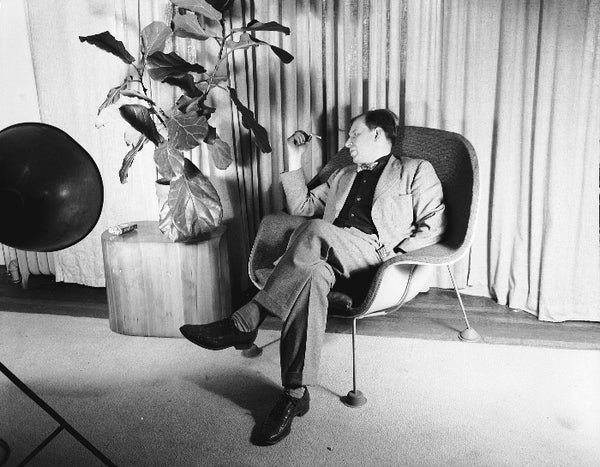
Photo: Knoll
His most famous furniture designs are both chairs: the Tulip Chair and the Womb Chair. In these chairs, Saarinen used fiberglass which was a new material for furnishings. Saarinen’s furniture designs and his innovative use of materials are continuing to inspire other designers to push the envelope of what’s possible to this day.

Photo: The Red List
He’s probably best known for his bold and beautiful furniture designs, but his work as an architect is equally prolific. His most recognizable building is probably the St. Louis Gateway Arch. He’s also responsible for the TWA Flight Center at JFK International Airport in New York. His architectural designs showcase his neofuturistic expressionism in their physics-defying curved concrete shells and sweeping staircases.
Saarinen is one of the Mid Century masters for good reason. His work achieved timeless appeal because of his innovative use of materials and vibrant, bold use of color and line. At the same time futuristic, organic, and enveloping, a Saarinen-designed chair or building is as engaging today as it was 60 years ago.

How the Eames Bent Plywood LCW is Made
Howdy, bent plywood fans! I came across this video the other day and just had to share it with you. It’s all about how the Eames Lounge Chair Wood (LCW) came to be. They go back to the beginning and share how plywood - normally a construction material - became a modern furniture material through the creative eyes of Charles & Ray Eames. Then, the video goes behind the scenes and shows the actual process used to make the chairs today. It all happens just on the other side of our lovely state in Grand Rapids, Michigan. Watching it left me drooling and excited to make some bent plywood things myself, so enjoy!

Get Outside in Detroit: 5 of the best Metro Detroit parks and trails to get you into nature
Detroit is a big city - maybe not so much population-wise anymore, but in terms of area, Detroit is huge! Most are surprised to learn that the entire cities of Boston and San Francisco as well as the borough of Manhattan can comfortably fit within the land area of the City of Detroit. That’s not including the sprawling suburbs which stretch the concrete landscape tens of miles outside of the city limits. The car culture is certainly strong in the Motor City, and sprawl is just one way that’s manifested in Southeastern Michigan. But where can the nature lover go when the endless miles of city and suburb get to be too much? Here are some of the best parks and trails in the Detroit area for when your need for nature beckons.
Belle Isle

Photo: Indianvillage-wnfga.org
Starting in the heart of the city, Belle Isle is one of Detroit’s oldest parks. The island in the middle of the Detroit River and abounds in natural wonders. You can go for a swim, rent a kayak, check out the beautiful aquarium, oggle at the vintage yachts at one of the nation’s oldest yacht clubs, take a peek in the Conservatory, explore the wooded areas and trails, or watch the sunset over the skyline of Detroit. There are so many things to do on Belle Isle. It’s truly an oasis in the city.
The Riverwalk & Dequindre Cut

Photo: Detroitgp.com
Over the past few years, the city has revitalized the riverfront and turned it into a beautiful promenade that connects multiple parks along the Detroit River. The Riverwalk currently stretches for almost five miles along the Detroit River, and soon a new stretch will open to create a continuous path all the way to the MacArthur Bridge to Belle Isle. Starting at Atwater Street, the Dequindre Cut is a rail trail that heads Northeast from the Riverwalk and stretches 2.5 miles to Eastern Market. The graffiti on the overpasses along the trail is definitely worth renting a bike or lacing up the shoes for a short run. Plus, at either end you have delicious food and drink at Eastern Market or Atwater Brewery - you can’t go wrong.
Lakeshore Drive

Photo: Mapio.net
Just outside of Detroit, Lakeshore Drive offers spectacular views of both million dollar mansions and Lake St. Clair. Going for a bike ride or run along the shore is a must for any architecture fan. The route stretches about three and a half miles from the Grosse Pointe Yacht Club and ends at the War Memorial. Along the way, Albert Kahn-designed mansions will make you drool, and constant lake views on the other side will bring you back to reality. It’s fun to venture into the neighborhoods, too, and see some great examples of Colonial and Tudor Revival and even some International Style homes.
River Rouge Park

Photo: Detroit1701.org
I’d be remiss to not include Rouge River Park on the list because of the impressive revitalization effort of the Friends of Rouge Park. It’s located about 14 miles outside of downtown (I mentioned how large Detroit is, right?) near the absolutely gorgeous Rosedale Park neighborhood (which is worth a visit as well). It is much more natural than the previous parks with secluded, natural trails along the river that feel like you’re in the wilderness rather than inside the limits of a major city. The park and trails are really well maintained and kept super clean thanks to the Friends of the Park. There are also monthly events in the park like fun runs and 5Ks if you’re a runner.
Paint Creek Trail

Photo: Paintcreektrail.org
Metro Detroit has 13 beautiful Metroparks which dot the suburban landscape and ensure you’re never too far from nature. In addition to the Metroparks, there are numerous Rail Trails, and one of the best is the Paint Creek Trail. The Paint Creek Trail runs from Rochester about nine miles to Lake Orion. It’s a well-maintained limestone path with pretty views of the creek and surrounding wooded areas. Plus, there’s a year round Cider Mill at about the halfway point if you need to replenish your carbs. The Rochester Riverwalk, the Clinton River Trail, and the Macomb Orchard Trail intersect it, leading to even more ways to get away from it all. It’s a bit outside of the Downtown area (about 25 miles North), but it’s one of the best maintained and easily accessible trails in the area.
There are many, many more parks and trails in Metro Detroit, so you’re never too far from being immersed in nature. I’d encourage you to step outside of the concrete jungle every once in a while and find your favorite park to get away from it all.

Why We Love Mid Century Modern
Welcome back to the second article in our series on Mid Century Modernism. In the first article, we explored how Mid Century design got it’s start and defined some of it’s guiding principles. If you haven’t read it yet, be sure to check it out here: What is Mid Century Modern. Next week, we'll provide some tips for adding some Mid Century style to your home. Today, we’re going to share why we love Mid Century Modern design with some of the reasons why it inspires us every day.
As we learned last week, Mid Century design has been around for quite a while. Most of the time, styles are cyclical with trends coming and going as the newest shiny object grabs our attention. The strange thing about Mid Century design is that it’s never really gone away. It’s had it’s ebbs and flows, certainly, but since it’s birth in the 1940s we’ve seen Mid Century elements incorporated into our living spaces quite consistently. Why do we love it so much?
Nature: The Foundational Element

Photo: Mosaikdesign.com
Nature’s calming influence permeates Mid Century design to it’s core. Large windows and sliding glass doors connect the indoors with the outdoors making it easy to enjoy nature right from your living room. Just like Mid Century design, simplicity and color are foundational elements in nature, too. Next time you’re in awe of a landscape, step back and appreciate the shapes and colors that bring it all together. Why we love nature: Nature’s clean lines, simple shapes, and bold colors are the perfect inspiration for a cohesive Mid Century room.
Simplicity: Focus on Function

Photo: Caterpillar House
Looking at the clean lines and simple shapes of Mid Century architecture and furniture, you can see that 'less is more’ is a guiding principle. When the ornate embellishments and excess stuff are stripped away, function becomes the focus of attention. Why we love simplicity: In a busy world with so many things constantly trying to get our attention, a simple, functional room with clean, geometric furniture can be an oasis.
Color: Let’s Have Some Fun

Photo: Nestmodern.com
Simple, clean shapes are super functional, yet they do lack interest. I mean, I love me a clean-lined mid century credenza, but a room full of simple geometric shapes leaves me wanting a bit more. This is precisely where color comes in - to add a very necessary layer of interest to the room. In the beginning of the Mid Century era, bright, cheerful colors communicated a fun, optimistic feel which was a welcome change after the Second World War. Why we love color: It’s usually that bright, cheerful, colorful element in a room that instigates a joyful smile.
Mid Century Modern design has been a part of our interior designs for well over half a century and it’s showing little sign of going away anytime soon. The connection to nature, clean lines, and bold colors are now timeless design elements. Be sure to check out the last part of this series: our tips for adding some Mid Century style to your home.

